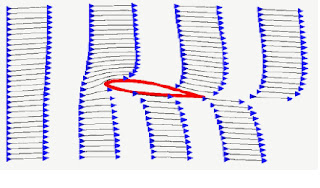
North Korea test-fired a long-range missile and five shorter-range rockets early Wednesday, but the closely watched long-range test failed within a minute, U.S. officials said.
The tests began shortly after 3:30 a.m. local time (2:30 p.m. Tuesday ET) and lasted for about five hours.
The Taepodong-2 missile, which some analysts believed capable of hitting the western United States, failed after about 40 seconds, U.S. officials said.
The U.N. Security Council planned to meet Wednesday morning to discuss North Korea's actions.
North Korean Foreign Ministry officials confirmed the tests Wednesday to reporters for two Japanese broadcasters, NHK and TV Tokyo.
U.S. National Security Adviser Stephen Hadley described the missile launches as "provocative behavior," but said they posted no immediate threat to the United States.
Washington dispatched Christopher Hill, its top negotiator in the six-party talks with the two Koreas, Japan, China and Russia, to consult with U.S. allies in Asia after the tests, Hadley said.
Hill has been the top U.S. negotiator in the six-party talks aimed at convincing North Korea to give up its nuclear weapons program.
A statement from the White House said the United States "strongly condemns" the launches and North Korea's "unwillingness to heed calls for restraint from the international community."
"We are consulting with international partners on next steps," the statement said.
"This provocative act violates a standing moratorium on missile tests to which the North had previously committed."
The United States and Japan had urged Pyongyang to stick with the moratorium on long-range missile tests it declared in 1999, after it fired a Taepodong-1 missile over Japan in 1998.
"We can now examine what the launches tell us about the intentions of North Korea," Hadley told reporters.
Washington and North Korea's Asian neighbors have been trying to convince North Korea to give up its nuclear program since 2002. Analysts called the tests an effort by North Korea to redirect attention to those talks.
"North Korea's point here is that they have capabilities, growing capabilities, and that they should be taken in a very serious way," said Wendy Sherman, a former State Department official who held talks with North Korean leader Kim Jong-Il during the Clinton administration



 The Transition sport aircraft design from Terrafugia promises to take away a lot of hassles faced by modern day pilots. The aircraft named The Transition is a design that provides the convenience of being able to fold the wings, driving on any of the surface road. So, from the confines of the cockpit, one can easily stow away the wings while the aircraft is on the road and deploy the same for the flight is all done on a click of a button thus, giving solution to the issues faced by pilots like uncertain weather, rising costs etc.
The Transition sport aircraft design from Terrafugia promises to take away a lot of hassles faced by modern day pilots. The aircraft named The Transition is a design that provides the convenience of being able to fold the wings, driving on any of the surface road. So, from the confines of the cockpit, one can easily stow away the wings while the aircraft is on the road and deploy the same for the flight is all done on a click of a button thus, giving solution to the issues faced by pilots like uncertain weather, rising costs etc.




 The first Airbus A380 aircraft made delivered to Emirates Airline in Hamburg, Germany. The first customer A380 powered by Engine Alliance engines, was presented to Chairman and Chief Executive Emirates Airline and Group,
The first Airbus A380 aircraft made delivered to Emirates Airline in Hamburg, Germany. The first customer A380 powered by Engine Alliance engines, was presented to Chairman and Chief Executive Emirates Airline and Group,


















